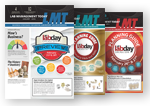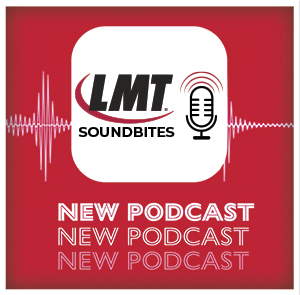Step 1: Adjust the survey model table on the hand mill to match the desired milling angle and place the Transfer Spider into the handpiece of the mill. Place the legs of the Transfer Spider directly over the implant or tooth-borne telescope and close to the telescope; you can use a light-cured or pattern resin (I used GC Pattern Resin) to lute the leg of the Spider to the primary telescope. In the case of implant telescopes, block the screw access hole with wax to prevent pattern resin from infiltrating it. A small hole can be drilled into the pattern resin to regain access to unscrew the implant analog.
Step 4: Once all of the telescopes are luted to the legs of the transfer spider jig, place a transfer form (shown above) on the milling table of the hand mill; you can “lock” it into place if the hand mill has a magnetic base switch. The spider jig can then be lowered into the form so you can visually confirm there’s enough space to pour the milling model and for implant or preparation analogs.
Step 5: Remove the transfer spider from the mill’s handpiece and screw the implant analogs into the abutment interfaces. Or, in the case of tooth preparations, pour the intaglio of the primary telescopes with pattern resin and place a hardware screw into the pattern resin to act as retention when pouring the milling model. Once the analogs are completed, re-check the spacing in the milling model form to ensure all analogs will fit into it.
Step 6: Choose a gypsum with good strength properties and a low percentage of setting expansion. I prefer a type IV die stone reinforced with resin like GC FujiRock® IMP, which has a linear setting expansion of 0.06% after two hours and a compressive strength of 54 MPa after one hour of set time. In addition to offering predictable and accurate results when fabricating milling models for telescoping prostheses, the stone is also ideal for implant and CAD/CAM cases and long-span superstructures.
When measuring GC FujiRock IMP, use a liquid-powder ratio of 20ml/100g LP and vacuum mix. Place the milling model form on a vibrator, pour the gypsum into the form and vibrate out any small amounts of remaining air.
Place the form on the hand mill’s table and position and lock it into place via the magnetic base. Carefully lower the spider jig toward the form on the milling table until the analogs are covered in gypsum. Use a metal waxing tool to ensure the gypsum completely covers all analogs.Step 7: The GC FujiRock IMP has an initial setting time of 11 minutes, however allow it to set for the full set time of two hours on the milling table. Once the gypsum has set, you can proceed with hand milling very easily and predictably, even over long spans with individual abutments for telescopic prostheses.


















